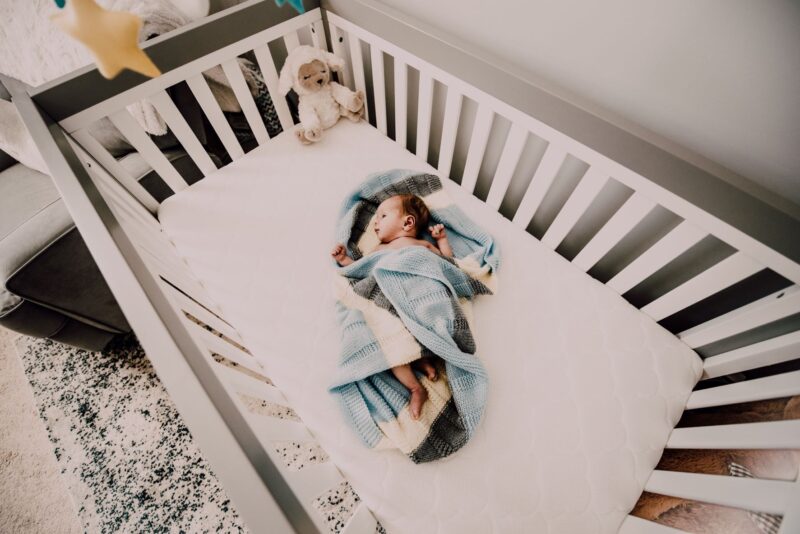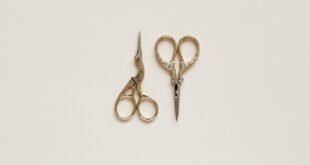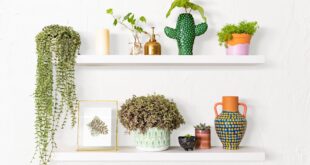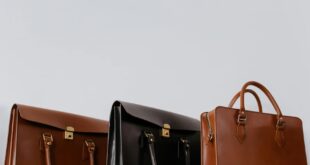Tiny Steps: A Complete Guide to Crib Shoes for Your Little Bundle – The Perfect First Shoes for Your Precious One.
Tiny Steps: A Complete Guide to Crib Shoes for Your Little Bundle is a comprehensive resource that aims to provide parents with all the necessary information about crib shoes for their little ones. This guide covers everything from the importance of crib shoes to choosing the right size, materials, and styles. Whether you’re a first-time parent or simply looking for guidance on this topic, Tiny Steps is here to help you make informed decisions when it comes to your baby’s footwear.
The Importance of Soft Sole Shoes for Infant Foot Development
Are you a new parent or soon-to-be parent? If so, you may have already started thinking about all the adorable little shoes you can dress your baby in. But before you go on a shopping spree, it’s important to understand the importance of soft sole shoes for your infant’s foot development.
When it comes to your baby’s feet, it’s crucial to prioritize their comfort and development. Soft sole shoes are specifically designed to mimic the feeling of being barefoot, allowing your little one’s feet to move and grow naturally. Unlike rigid shoes, soft sole shoes provide flexibility and freedom of movement, which is essential for healthy foot development.
During the first few months of your baby’s life, their feet are still developing and growing rapidly. Soft sole shoes allow their feet to develop naturally, without any restrictions. The soft and flexible soles of these shoes enable your baby’s feet to move and flex, helping to strengthen their muscles and promote proper alignment.
Another important aspect of soft sole shoes is that they provide sensory feedback to your baby’s feet. The soles of these shoes are thin and allow your baby to feel the ground beneath them. This sensory feedback is crucial for their balance and coordination development. By feeling the ground, your baby’s brain can better understand their body’s position and adjust accordingly.
Soft sole shoes also offer protection for your baby’s feet without compromising their development. The soft and flexible materials used in these shoes provide a barrier between your baby’s feet and the ground, protecting them from sharp objects or rough surfaces. However, it’s important to note that soft sole shoes are not meant for outdoor use or walking on hard surfaces. They are primarily designed for indoor use or on soft, safe surfaces.
When choosing soft sole shoes for your baby, it’s essential to find the right fit. The shoes should be snug but not too tight, allowing room for your baby’s feet to grow. Look for shoes with adjustable closures, such as Velcro or elastic, to ensure a secure fit. It’s also a good idea to measure your baby’s feet regularly, as their size can change quickly during the first year.
As your baby starts to become more mobile and begins to crawl or take their first steps, soft sole shoes can provide additional support and protection. They can help prevent slips and falls, while still allowing your baby’s feet to move naturally. Soft sole shoes with non-slip soles are particularly beneficial for this stage, as they provide extra grip on smooth surfaces.
In conclusion, soft sole shoes are an essential part of your baby’s wardrobe. They promote healthy foot development, provide sensory feedback, and offer protection without restricting movement. Remember to choose the right fit and opt for shoes with adjustable closures. With the right pair of soft sole shoes, your little bundle will be ready to take tiny steps towards their next big adventure!
Stylish and Cute Baby Booties for Your Little Bundle
Are you a new parent or soon-to-be parent? If so, you know that there are so many things to consider when it comes to taking care of your little bundle of joy. From choosing the right crib to picking out the perfect clothes, every decision feels important. One item that often gets overlooked but is actually quite important is crib shoes. These tiny shoes not only keep your baby’s feet warm and protected, but they can also be a stylish and cute addition to any outfit. In this article, we will guide you through everything you need to know about crib shoes for your little bundle.
First things first, let’s talk about why crib shoes are important. When your baby starts to crawl and eventually take their first steps, their feet need to be protected. Crib shoes are designed with soft soles that allow for natural movement and flexibility. They provide a layer of protection against rough surfaces and help prevent slips and falls. Additionally, crib shoes keep your baby’s feet warm and cozy, especially during the colder months.
Now that we understand the importance of crib shoes, let’s dive into the different styles available. There are so many adorable options to choose from, it can be overwhelming! One popular style is booties. These tiny shoes are perfect for keeping your baby’s feet warm and snug. They often come with cute designs and patterns, making them a stylish addition to any outfit. Another popular style is moccasins. These soft-soled shoes are not only comfortable but also easy to put on and take off. They come in a variety of colors and materials, allowing you to find the perfect pair to match your baby’s style.
When it comes to choosing the right size, it’s important to measure your baby’s feet accurately. Remember, their feet are still growing, so you want to make sure you have the right fit. To measure their feet, place them on a piece of paper and trace around them. Then, measure the length from the heel to the longest toe. Use this measurement as a guide when selecting the size of crib shoes. It’s also a good idea to choose shoes with adjustable closures, such as Velcro or elastic, to ensure a secure fit.
Now that you know the importance of crib shoes and how to choose the right size, let’s talk about caring for them. Since crib shoes are often made of soft materials, they require gentle care. It’s best to hand wash them using mild detergent and cold water. Avoid using harsh chemicals or bleach, as they can damage the shoes. After washing, let them air dry to maintain their shape and prevent shrinking.
In conclusion, crib shoes are an important accessory for your little bundle of joy. They provide protection, warmth, and style. Whether you choose booties or moccasins, make sure to measure your baby’s feet accurately and choose the right size. And don’t forget to care for them properly to ensure they last. With these tips in mind, you’ll be able to find the perfect crib shoes for your little one and watch them take their tiny steps in style.
Choosing the Right Crib Shoes for Your Baby’s First Steps
Are you a new parent eagerly awaiting your little one’s first steps? It’s an exciting milestone that every parent looks forward to. As your baby starts to explore the world on their own two feet, it’s important to choose the right footwear to support their tiny steps. Crib shoes are the perfect choice for this stage of your baby’s development. In this article, we will guide you through the process of choosing the right crib shoes for your little bundle of joy.
First and foremost, it’s important to understand what crib shoes are and why they are essential for your baby’s first steps. Crib shoes are soft-soled shoes specifically designed for infants who are learning to walk. Unlike regular shoes, crib shoes are made from soft and flexible materials that allow your baby’s feet to move and develop naturally. They provide a protective layer between your baby’s feet and the ground, preventing any potential injuries while still allowing for proper foot development.
When it comes to choosing the right crib shoes, there are a few factors to consider. The first is the size of the shoes. It’s crucial to measure your baby’s feet accurately to ensure a proper fit. Remember, their feet are still growing, so you’ll need to check their size regularly. Look for shoes that have a little extra room for growth, but not too much that they are loose and uncomfortable.
Next, consider the material of the crib shoes. Soft and breathable materials like cotton or leather are ideal for your baby’s delicate feet. These materials allow for proper air circulation, preventing any discomfort or sweating. Avoid shoes made from synthetic materials that can cause irritation or restrict movement.
Another important factor to consider is the sole of the crib shoes. Look for shoes with a non-slip sole to provide stability and prevent any accidents. The sole should also be flexible to allow your baby’s feet to move naturally. Avoid shoes with hard soles as they can hinder your baby’s ability to feel the ground and develop balance.
Now that you know what to look for in crib shoes, let’s talk about style. Crib shoes come in a variety of adorable designs and colors, making it fun to choose a pair that matches your baby’s personality. From cute animal prints to vibrant patterns, there’s something for every little one. Just remember, while style is important, comfort and functionality should always be the top priority.
When it comes to caring for crib shoes, it’s essential to keep them clean and in good condition. Since they are often worn indoors, they may not get as dirty as regular shoes. However, accidents can happen, so it’s a good idea to have a gentle baby-friendly detergent on hand for any spills or stains. Always follow the manufacturer’s instructions for cleaning and drying to ensure the longevity of the shoes.
In conclusion, choosing the right crib shoes for your baby’s first steps is an important decision. Remember to consider factors such as size, material, sole, and style. By providing your little bundle of joy with the right footwear, you’ll be supporting their development and ensuring their comfort and safety as they take their first tiny steps into the world.
Comfortable and Fashionable Baby Footwear for Newborns

Are you a new parent looking for the perfect footwear for your little bundle of joy? Look no further! In this article, we will guide you through the world of crib shoes, helping you find the perfect combination of comfort and style for your newborn.
When it comes to baby footwear, comfort is key. Crib shoes are specifically designed to provide support and protection for your baby’s delicate feet. Made from soft and breathable materials, these shoes ensure that your little one’s feet stay cozy and comfortable all day long.
One of the most important factors to consider when choosing crib shoes is the fit. It’s crucial to find shoes that are neither too tight nor too loose. Shoes that are too tight can restrict your baby’s foot development, while shoes that are too loose can be a tripping hazard. Look for shoes with adjustable closures, such as Velcro or elastic, to ensure a snug fit.
Another important aspect to consider is the sole of the crib shoes. Soft soles are ideal for newborns as they allow for natural foot movement and development. They also provide a good grip, preventing slips and falls as your baby starts to explore their surroundings. Avoid shoes with hard soles, as they can hinder your baby’s ability to feel the ground beneath them.
Now that we’ve covered the basics, let’s talk about style! Just because crib shoes are primarily for comfort doesn’t mean they can’t be fashionable too. There are countless adorable designs and patterns available, allowing you to find the perfect pair to match your baby’s outfits.
For a classic and timeless look, you can’t go wrong with leather crib shoes. They are not only durable but also incredibly stylish. Leather shoes come in a variety of colors and finishes, making it easy to find a pair that suits your baby’s style.
If you’re looking for something a little more fun and playful, fabric crib shoes are a great option. They come in a wide range of patterns and prints, from cute animals to vibrant florals. These shoes are perfect for adding a pop of color to your baby’s ensemble.
When it comes to choosing the right crib shoes, it’s important to consider the season. During the warmer months, opt for lightweight and breathable materials such as cotton or canvas. These materials allow for proper air circulation, keeping your baby’s feet cool and comfortable.
In colder weather, look for crib shoes with a warm lining, such as fleece or faux fur. These materials provide insulation and keep your baby’s feet cozy and snug. Additionally, shoes with a high ankle or bootie style can help keep your baby’s feet and ankles warm.
In conclusion, crib shoes are an essential part of your baby’s wardrobe. They provide comfort, support, and protection for your little one’s feet while adding a touch of style to their outfits. Remember to prioritize fit and choose shoes with soft soles for optimal foot development. Whether you opt for leather or fabric, lightweight or warm, there are plenty of options available to suit your baby’s needs and style. So go ahead and take those tiny steps towards finding the perfect crib shoes for your little bundle of joy!
A Complete Guide to Baby Footwear: From Booties to Crib Shoes
Are you a new parent or soon-to-be parent? If so, you may find yourself overwhelmed by the sheer number of baby products available on the market. From diapers to strollers, it can be challenging to navigate through all the options and find what is best for your little one. One item that often gets overlooked but is essential for your baby’s comfort and development is footwear. In this article, we will focus specifically on crib shoes, also known as pre-walker shoes, and provide you with a complete guide to help you make the best choice for your little bundle of joy.
Crib shoes are designed for babies who are not yet walking but are starting to explore their surroundings. They are typically made of soft, breathable materials such as cotton or leather to ensure maximum comfort for your baby’s delicate feet. Unlike regular shoes, crib shoes have a soft sole that allows for natural movement and flexibility, promoting healthy foot development.
When choosing crib shoes for your baby, it is important to consider the fit. Babies’ feet grow rapidly, so it is crucial to measure their feet regularly and choose shoes that provide enough room for growth. Look for shoes with a wide toe box that allows your baby’s toes to wiggle freely. Avoid shoes that are too tight or restrictive, as they can hinder your baby’s natural foot development.
Another factor to consider when selecting crib shoes is the closure type. Velcro straps or elastic bands are popular choices as they make it easy to put on and take off the shoes. Avoid shoes with laces or buckles, as they can be difficult to manage with a wriggling baby. Remember, convenience is key when it comes to baby footwear!
In terms of style, crib shoes come in a wide variety of designs and colors. From cute animal prints to classic pastels, you can find a pair that matches your baby’s personality and outfits. However, it is important to prioritize comfort and functionality over style. Choose shoes that are easy to clean and maintain, as babies have a knack for getting their shoes dirty in no time!
Now that you have a better understanding of crib shoes, you may be wondering when to introduce them to your baby. Experts recommend waiting until your baby starts pulling themselves up and cruising along furniture before introducing crib shoes. This usually happens around 8 to 10 months of age. Before that, it is best to let your baby go barefoot or wear socks to allow for natural foot development.
Once your baby is ready for crib shoes, it is important to remember that they are not meant for outdoor use. Crib shoes are designed for indoor use only and should not be worn outside. If you need shoes for outdoor activities, look for shoes specifically designed for walking toddlers.
In conclusion, crib shoes are an essential part of your baby’s wardrobe. They provide comfort, support, and promote healthy foot development. When choosing crib shoes, prioritize fit, closure type, and convenience. Remember to wait until your baby is ready for crib shoes and avoid using them for outdoor activities. With these tips in mind, you can confidently choose the perfect pair of crib shoes for your little bundle of joy. Happy shopping!
The Role of Crib Shoes in Your Baby’s Foot Health
Welcome to Tiny Steps, a complete guide to crib shoes for your little bundle of joy! In this section, we will explore the role of crib shoes in your baby’s foot health. As a parent, you want nothing but the best for your baby, and that includes taking care of their tiny feet.
Crib shoes are specifically designed for babies who are not yet walking. They are soft-soled shoes that provide protection and warmth to your baby’s feet. While some may argue that crib shoes are not necessary, they do play a significant role in your baby’s foot development.
One of the main benefits of crib shoes is that they provide a barrier between your baby’s feet and the ground. As your little one starts to explore their surroundings, they may come into contact with various surfaces that can be rough or cold. Crib shoes act as a protective layer, preventing any discomfort or injury to your baby’s delicate feet.
Another important aspect of crib shoes is that they allow for proper foot development. The soft soles of crib shoes mimic the feeling of being barefoot, which is essential for your baby’s foot muscles to strengthen and develop naturally. This is especially important during the early stages of walking when your baby’s feet are still growing and forming.
Crib shoes also offer a level of support to your baby’s feet. While they may not provide the same level of support as walking shoes, they do help in stabilizing your baby’s feet and ankles. This can be particularly beneficial for babies who have flat feet or other foot conditions that require extra support.
It’s important to note that crib shoes should not be worn all the time. Your baby’s feet need time to breathe and develop without any restrictions. It is recommended to let your baby go barefoot or wear socks for a significant portion of the day. Crib shoes should only be worn when your baby is indoors or in a controlled environment.
When choosing crib shoes for your little one, there are a few factors to consider. Firstly, make sure the shoes are made from breathable materials such as cotton or leather. This will allow air to circulate and prevent your baby’s feet from getting sweaty or overheated.
Secondly, opt for shoes with a flexible and non-slip sole. This will ensure that your baby can move their feet freely and safely without the risk of slipping. Avoid shoes with hard soles or excessive grip, as they can hinder your baby’s natural foot movement.
Lastly, choose crib shoes that are the right size for your baby’s feet. It’s important to measure your baby’s feet regularly, as they grow quickly during the first year. Ill-fitting shoes can cause discomfort and restrict proper foot development.
In conclusion, crib shoes play a vital role in your baby’s foot health. They provide protection, support, and allow for proper foot development. However, it’s important to remember that crib shoes should not be worn all the time, and your baby’s feet need time to breathe and develop naturally. By choosing the right crib shoes and allowing your baby to go barefoot or wear socks for a significant portion of the day, you can ensure that your little one’s feet are healthy and happy. Stay tuned for the next section of Tiny Steps, where we will explore different types of crib shoes and how to choose the perfect pair for your baby!
Keeping Your Little Bundle’s Feet Happy: Tips for Selecting the Perfect Crib Shoes
Are you a new parent or soon-to-be parent? If so, you know that there are countless decisions to make when it comes to your little bundle of joy. From choosing the perfect crib to selecting the softest blankets, every detail matters. One important decision that often gets overlooked is selecting the right crib shoes for your baby. While it may seem like a small detail, the right crib shoes can make a big difference in keeping your little one’s feet happy and healthy.
When it comes to crib shoes, comfort is key. Your baby’s feet are delicate and still developing, so it’s important to choose shoes that provide a soft and flexible sole. Look for shoes made from breathable materials like cotton or leather, as these will allow your baby’s feet to breathe and prevent them from getting too hot or sweaty. Avoid shoes with hard soles or stiff materials, as these can restrict your baby’s natural foot movement and potentially cause discomfort.
Another important factor to consider when selecting crib shoes is the fit. Babies’ feet grow rapidly, so it’s crucial to choose shoes that are the right size. Avoid shoes that are too tight, as they can constrict your baby’s feet and hinder their natural development. On the other hand, shoes that are too loose can cause your baby to trip or stumble. Look for shoes with adjustable closures, such as Velcro or elastic, as these will allow you to customize the fit to your baby’s foot.
In addition to comfort and fit, it’s also important to consider the style of crib shoes. While your baby may not be walking yet, crib shoes can still be a fun and fashionable accessory. Look for shoes in cute and colorful designs that match your baby’s outfits. From animal prints to floral patterns, there are endless options to choose from. Just remember to prioritize comfort and fit over style when making your selection.
When it comes to caring for crib shoes, it’s important to keep them clean and in good condition. Babies are notorious for making messes, so it’s likely that your baby’s shoes will get dirty from time to time. To clean crib shoes, simply wipe them down with a damp cloth or sponge. Avoid using harsh chemicals or abrasive materials, as these can damage the shoes. If the shoes are machine washable, follow the manufacturer’s instructions for cleaning.
As your baby grows and starts to take their first steps, it will be time to transition from crib shoes to more supportive footwear. However, crib shoes still serve an important purpose in keeping your little one’s feet comfortable and protected during those early months. By choosing crib shoes that prioritize comfort, fit, and style, you can ensure that your baby’s feet are happy and healthy from the very beginning.
In conclusion, selecting the perfect crib shoes for your little bundle is an important decision that should not be overlooked. By prioritizing comfort, fit, and style, you can ensure that your baby’s feet are happy and healthy. Remember to choose shoes with soft and flexible soles, adjustable closures, and breathable materials. Keep the shoes clean and in good condition, and when the time comes, transition to more supportive footwear as your baby starts to walk. With these tips in mind, you can confidently choose the best crib shoes for your little one.
Conclusion
In conclusion, Tiny Steps: A Complete Guide to Crib Shoes for Your Little Bundle provides comprehensive information and guidance on choosing crib shoes for infants. It covers various aspects such as sizing, materials, safety features, and recommended brands. This guide is a valuable resource for parents looking to ensure the comfort and protection of their little ones’ feet during the early stages of development.
 Wnkrs Blog Celebrating Every Style and Space
Wnkrs Blog Celebrating Every Style and Space





